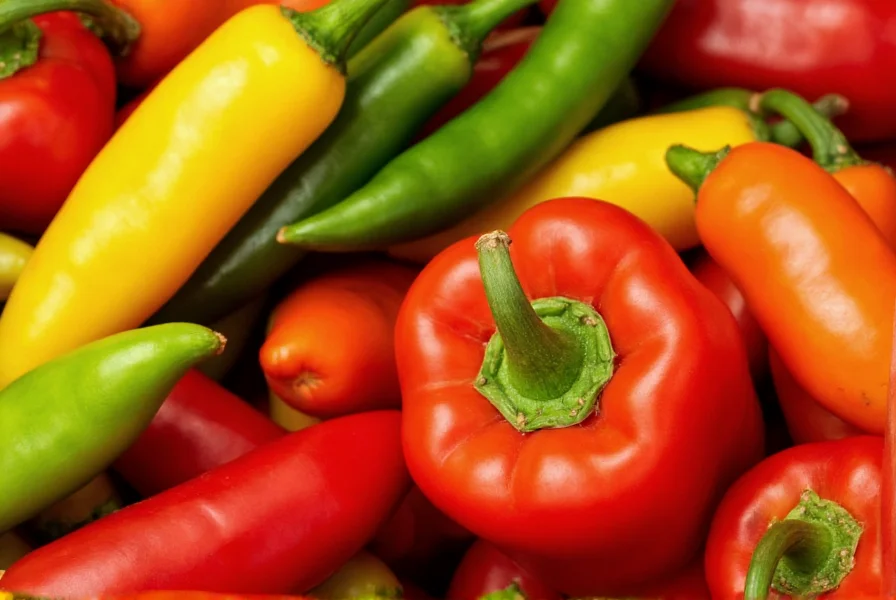The Science Behind Chili Peppers
Chili peppers contain capsaicin, the compound responsible for their heat, which interacts with pain receptors in your body. This interaction triggers the release of endorphins while providing several physiological benefits. Beyond capsaicin, chilies are packed with essential nutrients:
| Nutrient | Amount per 100g | Health Significance |
|---|---|---|
| Vitamin C | 144mg (160% DV) | Boosts immunity and skin health |
| Vitamin A | 116% DV | Supports vision and immune function |
| Vitamin B6 | 20% DV | Aids metabolism and brain health |
| Potassium | 10% DV | Regulates blood pressure |
Proven Health Benefits of Chili Consumption
Research reveals multiple health benefits of eating chili peppers that extend beyond their nutritional profile. The capsaicin content provides unique physiological effects that contribute to overall wellness.
Metabolism and Weight Management
Studies show capsaicin can increase metabolic rate by up to 5% and reduce appetite. A 2017 review in Chemical Senses found that regular consumption of chili peppers and weight loss are positively correlated, with participants consuming approximately 2g of red pepper daily showing reduced calorie intake at subsequent meals.
Cardiovascular Protection
Regular moderate consumption of chili demonstrates impressive chili peppers and heart health benefits. Research published in the Journal of the American College of Cardiology followed 23,000 participants for 8 years, finding those who ate chili more than four times weekly had a 44% lower risk of dying from heart disease compared to those who rarely consumed it.
Natural Pain Relief
Capsaicin works by depleting substance P, a chemical involved in transmitting pain signals. This explains why topical capsaicin creams effectively treat conditions like arthritis and neuropathy. Consuming chili regularly may provide mild benefits of capsaicin for pain relief through systemic effects.
Antioxidant and Anti-inflammatory Properties
Chili peppers contain flavonoids and carotenoids that combat oxidative stress. The antioxidant effects of chili consumption may help reduce inflammation throughout the body, potentially lowering risk for chronic diseases.

Potential Downsides and Considerations
While generally beneficial, chili isn't without potential drawbacks, particularly when consumed excessively or by sensitive individuals.
Digestive Sensitivity
For some people, especially those with irritable bowel syndrome (IBS) or inflammatory bowel disease (IBD), chili can trigger symptoms. The negative effects of eating too much chili may include abdominal pain, diarrhea, and exacerbation of existing gastrointestinal conditions.
Acid Reflux and Heartburn
Chili can relax the lower esophageal sphincter, allowing stomach acid to flow back into the esophagus. Those with gastroesophageal reflux disease (GERD) often report worsened symptoms after consuming spicy foods.
Individual Tolerance Variations
Tolerance to chili varies significantly between individuals due to genetic differences in pain receptor sensitivity. What's mildly spicy to one person might be unbearable to another. Gradually building tolerance can help most people enjoy the benefits of spicy food without discomfort.
Different Chili Types and Their Effects
Not all chilies offer identical benefits. The capsaicin concentration varies dramatically:
- Bell peppers (0 SHU): Zero capsaicin but rich in vitamins
- Jalapeños (2,500-8,000 SHU): Moderate heat with good nutritional profile
- Habaneros (100,000-350,000 SHU): High capsaicin with potent effects
- Ghost peppers (over 1,000,000 SHU): Extreme heat with potential for adverse reactions
For most health benefits, moderately hot varieties like jalapeños or cayenne provide optimal capsaicin levels without excessive irritation. The question of how much chili should you eat daily depends on individual tolerance, but starting with 1/4 to 1/2 teaspoon of cayenne pepper or one small jalapeño daily is reasonable for most people.
Practical Consumption Guidelines
To maximize benefits while minimizing potential discomfort:
- Start with small amounts and gradually increase as your tolerance builds
- Pair chili with dairy products (milk, yogurt) which neutralize capsaicin
- Consume chili with meals rather than on an empty stomach
- Remove seeds and membranes where capsaicin concentration is highest
- Stay hydrated but avoid drinking water alone to cool your mouth (dairy works better)
For those exploring is capsaicin good for your health through supplements, consult a healthcare provider first, as concentrated forms may interact with certain medications.

Conclusion
Chili peppers offer impressive health benefits when consumed as part of a balanced diet. The scientific evidence supporting is chili good for you is substantial, showing positive effects on metabolism, heart health, and pain management. However, individual responses vary, and those with specific digestive conditions should exercise caution. For most people, incorporating moderate amounts of chili into their diet provides a flavorful way to boost nutrition and potentially improve long-term health outcomes.











 浙公网安备
33010002000092号
浙公网安备
33010002000092号 浙B2-20120091-4
浙B2-20120091-4